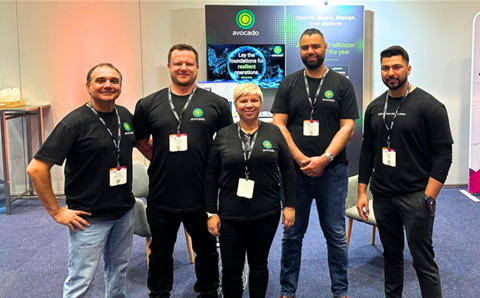Haydn Masters is very protective of his ‘assets’ because they keep getting thumped, costing his employer more than $1 million a year.
Masters’ predicament would be familiar to any IT manager trying to placate his chief finance officer, cut costs and maximise asset use. But in the case of Masters – the physical performance director for the NSW Waratahs rugby team – his assets were a squad of 35 players being fielded each week. Typically, a quarter of them were sidelined by injury after potentially taking 20 to 40 bone-jarring hits each game.
The impact is just as punishing on the club because a key player out with injury may mean a sizeable hit in ticket sales at the turnstiles.
But following a pioneering partnership with IBM to explore the boundaries of predictive analytics and business intelligence (BI), the ’Tahs estimate they cut their medical bill "by seven figures" and are a tougher team this year on the field and more profitable at the turnstiles.
Capturing the data requires an addition to the uniform. Players strap on sensors from Australian sports data specialist GPSports that transmit more than 200 data points in real-time. The reports cover things such as speed, direction of travel, impact, fatigue and wellness. Data is processed showing key factors on coaches’ iPads and after the game to direct training.
Masters was convinced the system was solid when retrospective data predicted three players were soon to be injured.
"The Waratahs use predictive analysis technologies to identify key markers for each player in regards to their injury risk," says Masters. "The model gives us alerts that make sure players’ injury risk is reduced going into a game or training."
He says BI shows coaches early signs of injury so they can modify a player’s training or rest them to stay at peak performance.
"It’s better for getting players on the field, which increases crowds in the stadium and merchandise sales," says Brock Douglas, IBM partner strategy and analytics leader.
"Coaches were always worried about pushing the player, so they would train at 80 percent capacity but now they can predict where the 100 percent line is, so they can train harder and improve their performance as well.
"When you think of players as assets, the same philosophy applies to other businesses like miners, Sydney Trains or Yarra Trams [when] predicting when assets will fail and how to increase the lifespan of those assets."
Measuring the mood
Away from the football field, a branch of BI called sentiment analysis is transforming research into depression. Using cloud services spun up over three months on Amazon Web Services, researchers at Sydney’s Black Dog Institute with the CSIRO used Twitter streams to see how Australia ‘feels’ at any time.
Mental health researchers say access to real-time data provided in the ‘We Feel’ project take the pulse of Australia and recognise geographies that may be at risk in real-time.
"The idea is to have a big vocabulary of emotional terms and track how they ebb and flow," says project leader and CSIRO postdoctoral research fellow David Milne.
It could step in when an individual is at suicide risk and nudge them into a life-saving mood, says institute director Helen Christensen.
"We want to respond in real-time to people in distressed situations by looking at what social networks they have, what messages will make them feel there’s hope or get people they know and trust to contact them," Professor Christensen says.
‘We Feel’ is powered by AWS’ real-time Kinesis service, which consumes massive datasets that run on the cloud service provider’s Elastic Compute service (EC2). It dovetails with AWS’ other cloud services such as Amazon storage (S3), DynamoDB database and Redshift data warehouse.
And while ‘We Feel’ was created to monitor trends as they occur, it may have profound implications for predicting political outcomes.
An original dataset captured Australians’ reactions to the unpopular 13 May federal budget, which spawned its own Twitter hashtag #BustTheBudget and raised 85,000 people in street protests on 6 July. ‘We Feel’ detected a rise in emotions on the budget’s release, particularly in negative feelings. The volume and velocity of data accelerated, rising to 560,000 tweets (from 483,000 on a typical Tuesday). While ‘joyous’ tweets grew 10 percent, they were swamped by ‘fearful’ and ‘angry’ tweets that rose by a third to 19,500 and 24,000, respectively.
AWS senior manager of technology solutions Glenn Gore says BI is moving in three distinct ways: the traditional way of loading structured data into a warehouse for human queries; batch processing using artificial intelligence and machine learning with services such as Hadoop; and real-time streaming of data, often to nudge behaviour or customise an experience.
"There’s no single platform – as we interact with data we need all three," Gore says.
Partners are also mixing services to meet different customer needs and accessing spot market prices for cheaper computation and storage, Gore says. This may cut the need to seek management approval for a business experiment.
"You’re seeing a new age of experimentation with customers. They use the cheap resources to run processing and if the price goes up, they stop and wait for it to go back down again," he says.
It’s more sophisticated
Nimrod Kuti, founder of IBM business partner Tridant, says that while new technology makes it easy to try new ideas, the demand is for more sophisticated solutions and analysis. "Its also being matched by more data challenges; the data is much more diverse, it comes from so many systems."
Partners seeking to impress their cost-conscious and possibly sceptical clients could look for inspiration in a Tridant project that improved cash flow for Australia Post. The award-winning solution based on IBM’s SPSS stats software and Cognos TM1 enterprise planning software entailed accurate daily forecasting of cash flow where data was previously stored in Excel files. Australia Post estimated in 2012 that daily cash flows "could fluctuate by tens of millions of dollars each day".
"It was thousands of transactions going through a branch network and it was impossible to forecast without an analytics engine. By going down in more detail they had greater confidence in the next two to three days’ cash flows to maximise investment," Kuti says.
Gartner analyst Ian Bertram says the work of the past 20 years is shifting to a system of innovation often geared towards engagement with the customers of a channel partner’s clients.
Bertram says Westpac’s ‘Know Me’ project captured activity such as which browser and channels customers used so the bank could offer a better omnichannel experience to its customers.
"We’re developing personas in a digital environment to understand how people like to engage with the bank so they can tailor that engagement and loyalty."
Bertram encourages partners to be tactical with their clients when it comes to experimenting on data. "You don’t want this necessarily [to be] pervasive across the entire organisation, but you want to do that exploration in a contained environment that has impact across products and services, customers and workforce efficiency – all the big-ticket business drivers."
Going it alone
Nathan Krisanski looked into the numbers, predicted where the IT industry was headed and, after leading a successful analytics project at a real estate property group, saw enough opportunity to head out on his own.
Krisanski, who is proficient with data visualisation software Tableau, has seen a surge in contract jobs from companies delving into their numbers. The great thing about the software, he says, is how quickly he can shape a prototype for clients – often while they watch.
"When I have an iterative experience with clients and play around with things in front of their eyes, that’s a ‘wow’ moment for them," Krisanski says.
And the software is so easy to use that even his novice clients extract immediate business value when left to their own devices, he says.
"One of my clients has no technical expertise but his consulting business is about helping developers understand the pricing and planning stages for property developments," Krisanski says. "He’s found a friend in Tableau and is using it aggressively to stand out against bigger groups."
The low price point for Tableau (about $2,000 for a desktop solution) and the speed at which solutions are cooked has led to an explosion in automated reporting services for another of Krisanski’s property data clients. It has also led to his HomePrezzo start-up, which turns property data into rich videos for display on websites such as Domain and Realestate.com.au.
In June, Tableau released version 8.2 that includes Story Points, a storytelling feature that walks a user through their data. Tableau Australia sales consultant Alan Eldridge says features such as this help BI filter into smaller organisations. "That’s critical to the smaller end of the market because they don’t have the dedicated resources," Eldridge says.
It’s perhaps not surprising that Tableau, a data software company founded by three-times Academy Award-winner Pat Hanrahan, would take a more figurative approach to presenting figures. After all, Hanrahan helped to make some of Pixar’s greatest and won an Oscar for software behind Toy Story.
He urges organisations to push data to every corner of their operations. "The most common mistake is to think that only a few people should have access to data, to over constrain what you do with it. You want to be careful about privacy and protecting data but that doesn’t mean you don’t give access to the right people."
Get all the data
Australian-born and US-based Kaggle is the world’s largest community of data scientists competing to solve complex problems. Kaggle formed an alliance with Deloitte’s analytics practice last year, to help the Big-Four consultant’s clients get on Kaggle’s crowdsourcing marketplace.
Kaggle founder and CEO Anthony Goldbloom says resellers are best suited to help clients ready their problem for competition. "We’re a marketplace; you take a dataset and put it up," Goldbloom says. "We are not a consulting firm or equipped to help a company frame its problem." He advises resellers to capture every possible dataset permitted by regulation because insights come from unexpected quarters. For instance, a Kaggle competition found that unusually coloured cars had higher resale values. This was based on comparing a dataset of about 10,000 auctions over a few years with warranty claims in the year following a sale. Standard-coloured cars were more likely to have a claim made against them, he says.
"We tell customers to give us every set of data you have access to regardless of whether you think it’s relevant or not," he says.
"You may find you’re surprised about what is the correlation – you wouldn’t intuit that colour would have an impact on how reliable the car was. But it turns out that it does."
In Australia, NSW’s Roads and Maritime Services used Kaggle to predict travel times on the M4. Health insurer HCF also used Kaggle to determine the likelihood that its policyholders would churn to another fund, while the University of Melbourne boosted the chances its researchers would win grants.
"Great data scientists throw out ideas that don’t work but keep the ones that do," Goldbloom says. "You have to be a creative thinker; creativity plays such a large role."
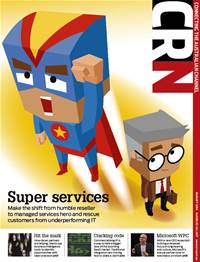

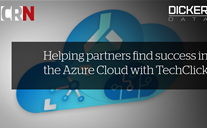
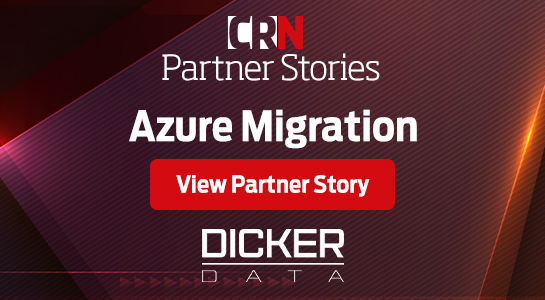

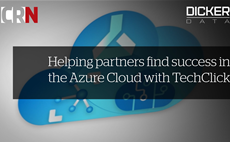


.png&h=142&w=230&c=1&s=1)


.png&w=100&c=1&s=0)






